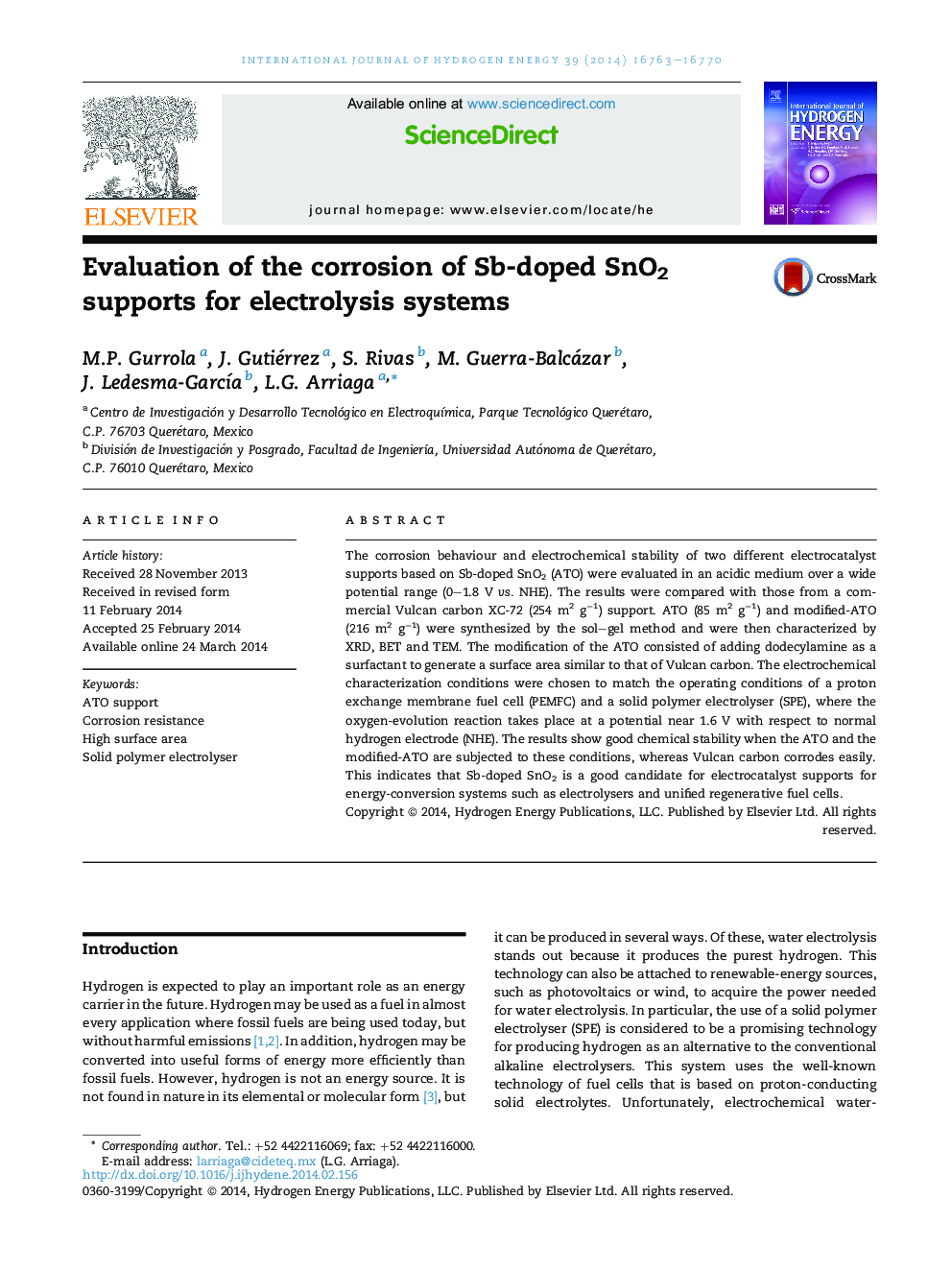| Article ID | Journal | Published Year | Pages | File Type |
|---|---|---|---|---|
| 1281018 | International Journal of Hydrogen Energy | 2014 | 8 Pages |
•Corrosion behaviour and electrochemical stability of ATO supports are evaluated.•The test is performed in an acid medium over a 0–1.8 V of potential range.•The evaluation is in PEM-fuel cell and a solid polymer electrolyser conditions.•Vulcan carbon corrodes easily under these conditions.•ATO is a good candidate for electrocatalyst support for energy-conversion systems.
The corrosion behaviour and electrochemical stability of two different electrocatalyst supports based on Sb-doped SnO2 (ATO) were evaluated in an acidic medium over a wide potential range (0–1.8 V vs. NHE). The results were compared with those from a commercial Vulcan carbon XC-72 (254 m2 g−1) support. ATO (85 m2 g−1) and modified-ATO (216 m2 g−1) were synthesized by the sol–gel method and were then characterized by XRD, BET and TEM. The modification of the ATO consisted of adding dodecylamine as a surfactant to generate a surface area similar to that of Vulcan carbon. The electrochemical characterization conditions were chosen to match the operating conditions of a proton exchange membrane fuel cell (PEMFC) and a solid polymer electrolyser (SPE), where the oxygen-evolution reaction takes place at a potential near 1.6 V with respect to normal hydrogen electrode (NHE). The results show good chemical stability when the ATO and the modified-ATO are subjected to these conditions, whereas Vulcan carbon corrodes easily. This indicates that Sb-doped SnO2 is a good candidate for electrocatalyst supports for energy-conversion systems such as electrolysers and unified regenerative fuel cells.
